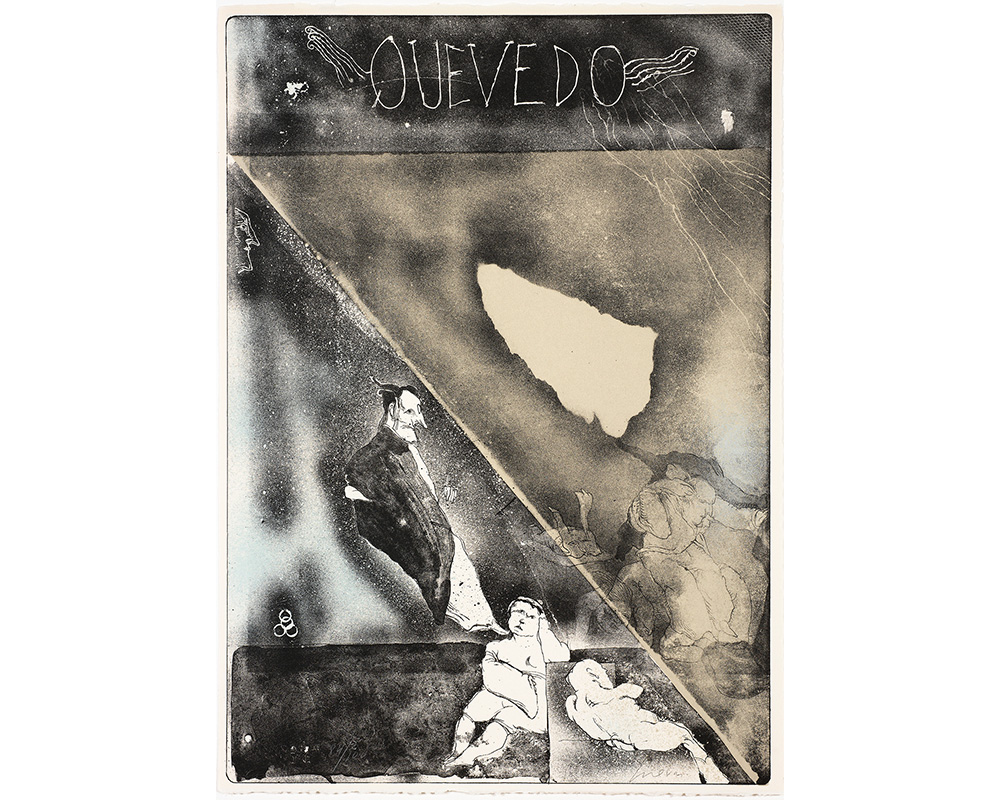
José Luis Cuevas
Aprile Gallant is the Senior Curator of Prints, Drawings, and Photographs at SCMA.
José Luis Cuevas (Mexican, 1934–) came of age as an artist during a period of transition in Mexican art and culture. The rise of an international art scene and the changing nature of Pan- American relations played a strong role in the development of his signature subjects and aesthetic. Cuevas and other Mexican expressionist artists who emerged in the 1950s were seen as rejecting the popular nationalism promoted by the “Big Three” Mexican muralists: Diego Rivera, Jose Clemente Orozco, and David Alfaro Siqueiros.
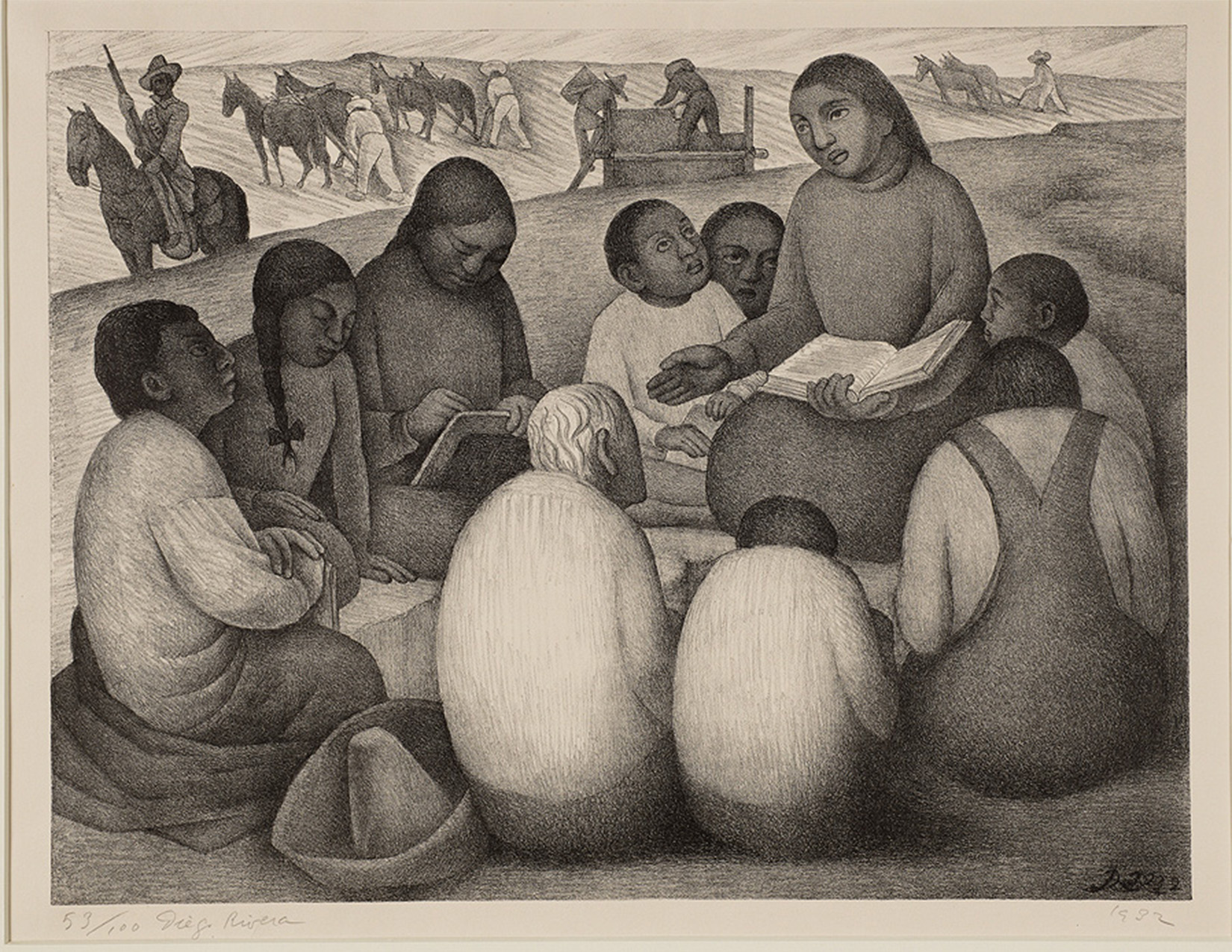
Diego Rivera. Mexican, 1886–1957. Reading Lesson, 1932. Lithograph printed in black on Rives wove paper. Gift of Selma Erving, class of 1927. 1972.50.95.
Instead of focusing on a heroic vision of Mexico’s past and present, Cuevas and artists of “La Ruptura” (Rupture) turned their attention toward psychological states and the seamier sides of contemporary life. Their embrace of general themes related to the human condition was viewed as more universal than muralism’s focus on political and social subjects.
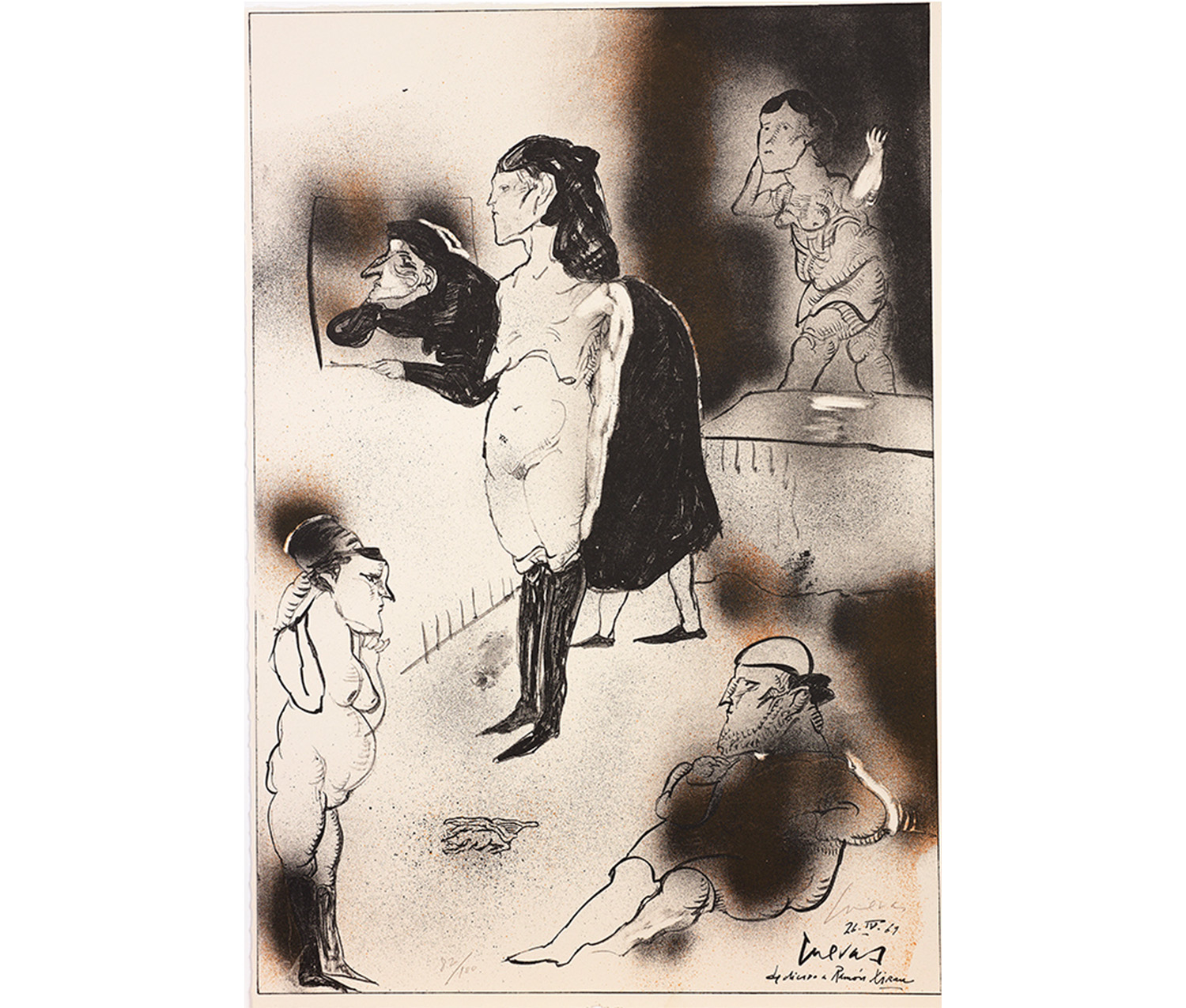
José Luis Cuevas. Mexican, born 1934. Interior, from the Homage to Quevedo Suite, 1969. Lithograph printed in color on Arches wove paper. Gift of Donna Kargman Donaghy, class of 1959, and Walter E. Donaghy. SC 1982.24.10.
When he first made an impact on the international scene with an exhibition at the Pan-American Union in Washington, D.C., in 1954, Cuevas was making grotesque figure drawings based on his observations of people on the margins of society, such as his study for Espagna.
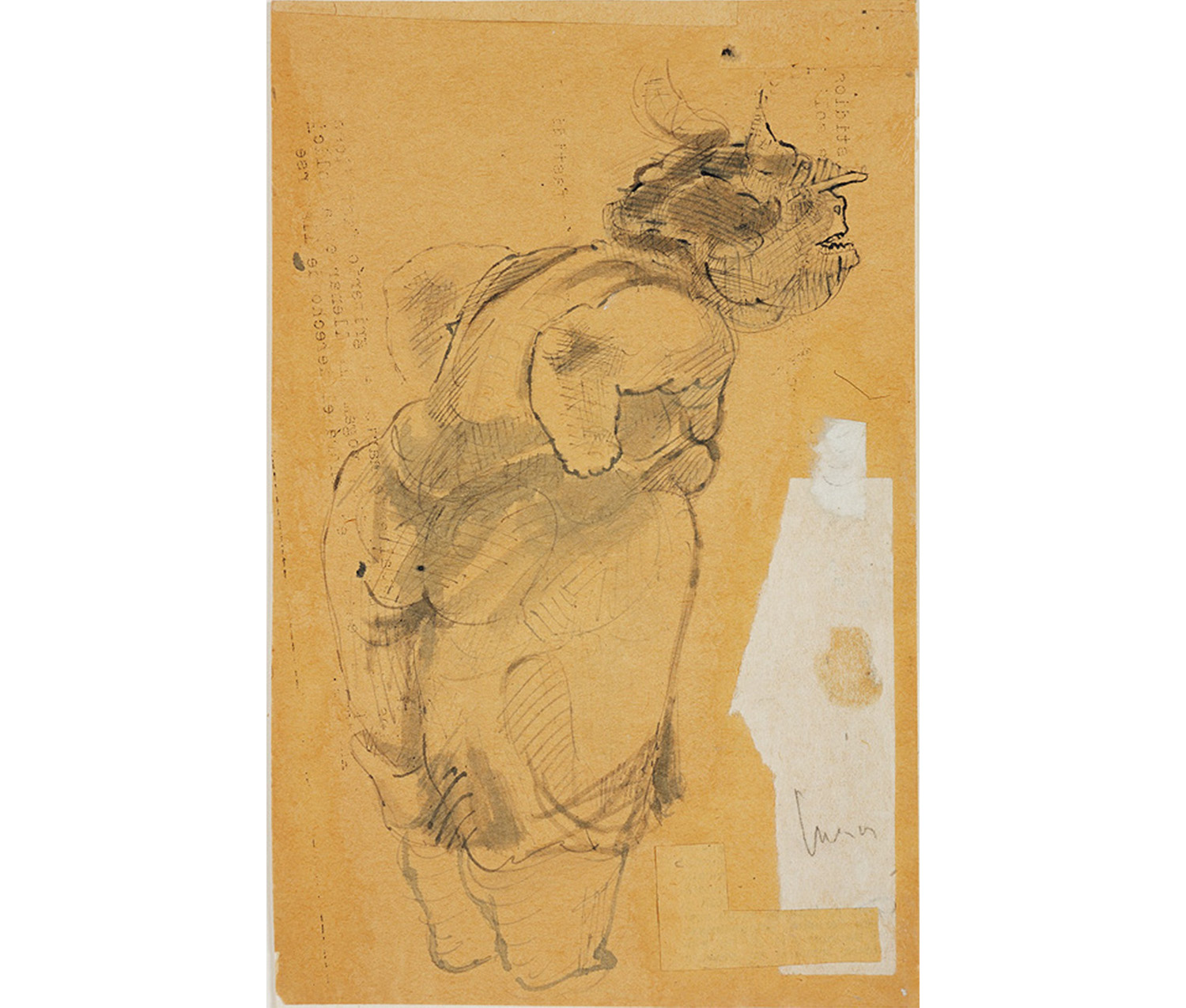
José Luis Cuevas. Mexican, born 1934. Study for "España", 1961. Pen, ink, wash and collage on paperboard. Gift of the estate of Dr. Heather McClave, class of 1968. SC 1999.57.
As the decade progressed, Cuevas began to focus more on literary themes, creating complex and open-ended narratives drawn from his imagination. The Homage to Quevedo suite was inspired by the poetry of the seventeenth-century Spanish poet Francisco Gómez de Quevedo (1580–1645).
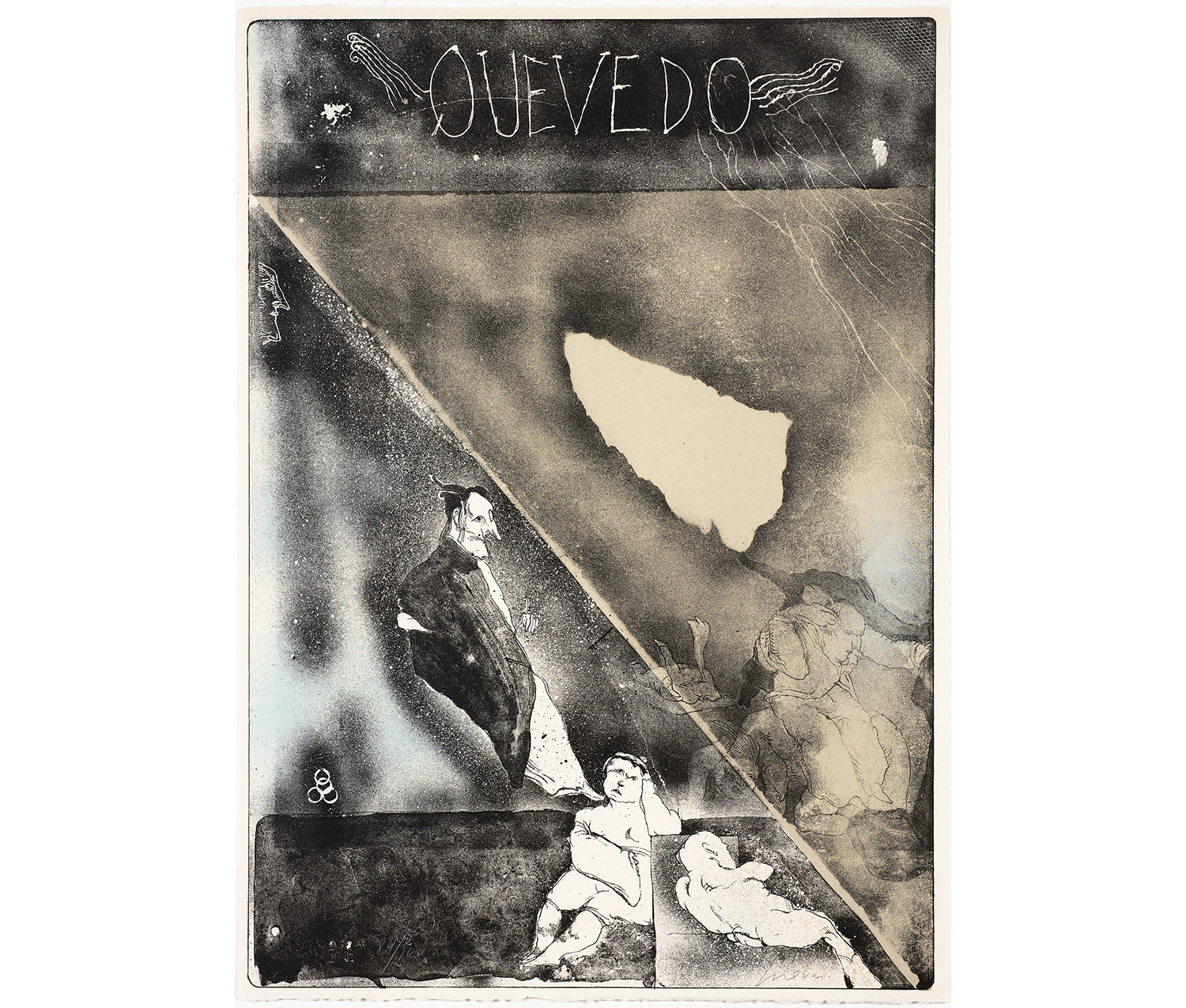
José Luis Cuevas. Mexican, born 1934. Condicion Humana II, from the Homage to Quevedo Suite, 1969. Lithograph printed in color on Arches wove paper. Gift of Donna Kargman Donaghy, class of 1959, and Walter E. Donaghy. SC 1982.24.7.
Like Cuevas’s art, Quevedo’s poetry was seen as critical of contemporary society; the writer switched easily between high and low art forms. Although none of Cuevas’s scenes are directly based on Quevedo’s writings, the images present a similar dreamlike and satiric quality that enhances the poetic texts.
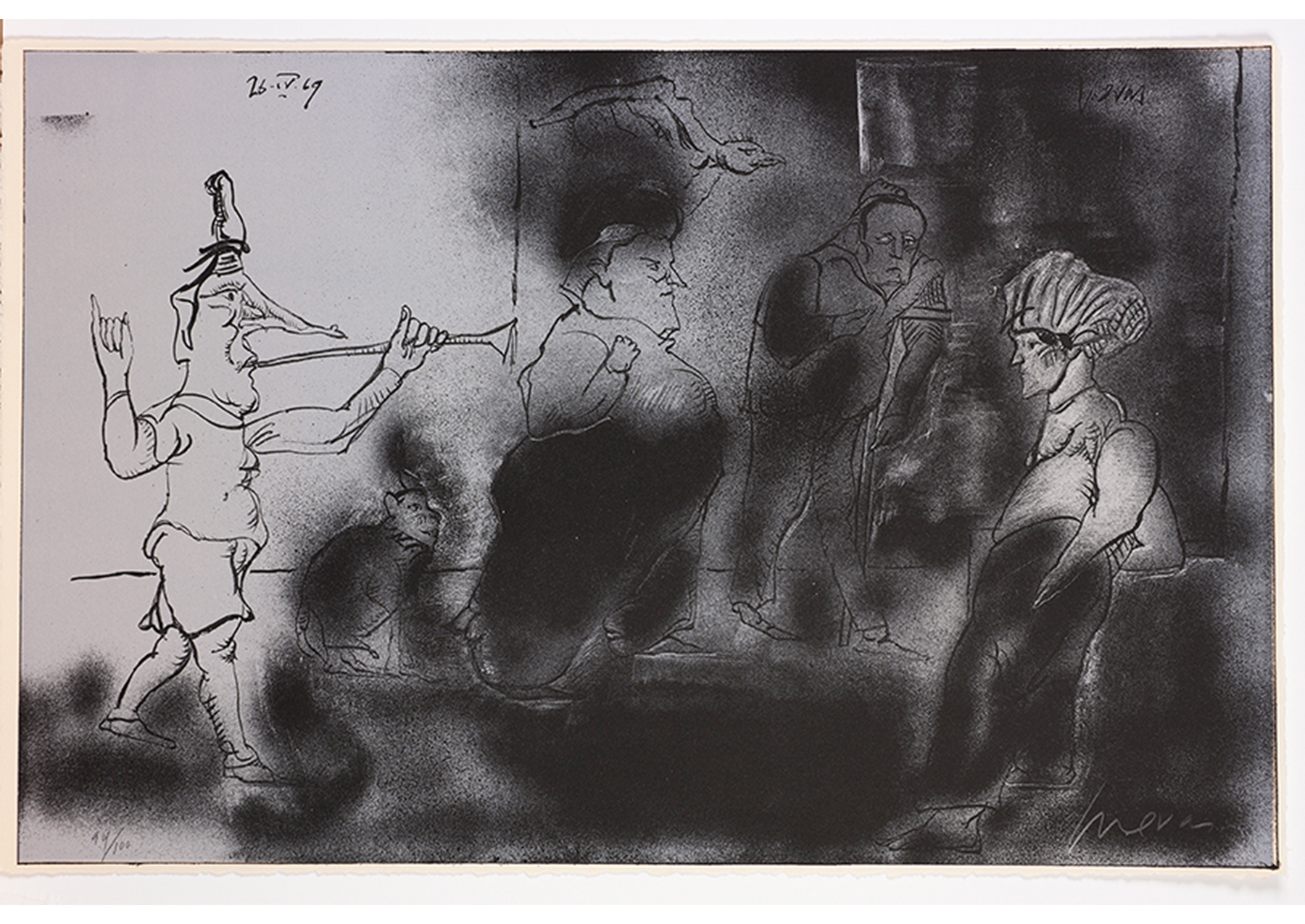
José Luis Cuevas. Mexican, born 1934. Desfile, from the Homage to Quevedo Suite, April 26, 1969. Lithograph printed in color on Arches wove paper. Gift of Donna Kargman Donaghy, class of 1959, and Walter E. Donaghy. SC 1982.24.9.
SCMA’s prints from Cuevas’s Homage to Quevedo Suite are on view on the Museum’s second floor until January 10, 2016.